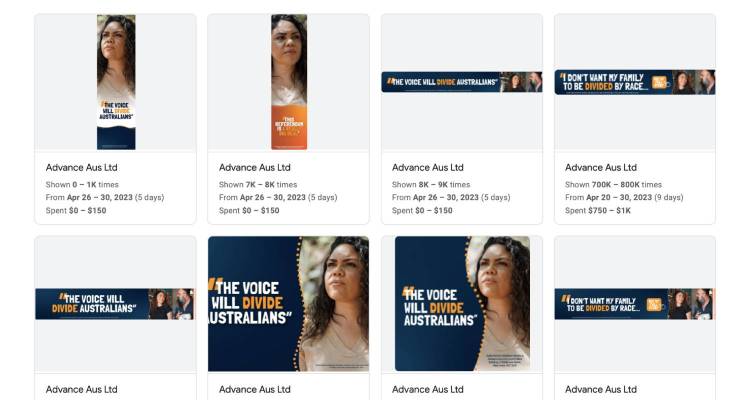
The Jacinta Nampijinpa Price-led campaign is the only Voice to Parliament group showing ads on YouTube and Google services so far, having paid to show their messages to millions of Australians in the past 10 days.
That’s according to data taken from Google’s ad transparency centre, which is now giving never-before-seen detail on advertisers using Google’s ad services to show messages about the Voice referendum. Google is responsible for serving video ads on YouTube, sponsored listings on Google search and display ads on other websites that use Google ads.
Last month, Google quietly updated its political content policy to include advertisements about “a referendum or plebiscite” in Australia starting from today.
This was part of “Google’s commitment to supporting the integrity of elections and electoral processes globally through greater transparency, and following the launch of political ads transparency for Australian Election Ads”, Google Australia’s director of government affairs and public policy Lucinda Longcroft told Crikey in an email.
This inclusion means that ads about the Voice to Parliament referendum will have the same requirements as advertisements run about elections or by politicians. This designation mandates verification of the advertisers’ identity, in-ad disclosure of their identity and inclusion in Google’s ad transparency report.
A look at Google’s transparency centre shows only one Voice campaign that has taken advantage of the tech giant’s advertising services so far. Right-wing lobby group Advance Australia’s No campaign, Fair Australia, has outspent every other political advertiser in the past 30 days, with more than $7000 spent on 82 YouTube ads, and display ads that were shown more than 2.5 million times, over the past two weeks. The campaign has spent the most money in New South Wales, Victoria and Queensland.
This reflects advertising on Facebook and Instagram where Fair Australia has also spent tens of thousands of dollars reaching users, outspent only by the Yes23 campaign.
Google’s ad transparency measures were first introduced in 2018 in the fallout of the 2016 US presidential election, when Russia used Facebook’s ad services to specifically target cohorts of US citizens with misinformation. Google and Meta, Facebook’s parent company, created transparency measures that allow people to see political advertisements and who they’re targeting in response to public pressure over the dangers of “dark advertising”.








So much for Price’s ‘grass-roots campaign’, which is still parroted as such by the MSM even though a 60 second google search reveals that her organisation, Fair Australia, is ‘powered by Advance’.
“Fair Australia”.
Seriously? The second meaning of “fair” is of a light complexion with blond hair.
You can’t make this stuff up.
There are ads on the internet?
So what!